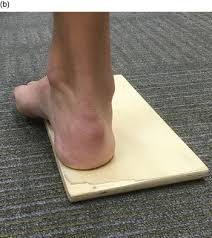
The Coleman block test, also known as the subtalar joint neutral test, is a clinical assessment tool used by podiatrists and other healthcare professionals to evaluate the alignment and motion of the subtalar joint in the foot. The test is named after Dr. James Coleman, who developed the technique in the early 1980s.
During the Coleman block test, the patient stands with the foot to be tested on a specially designed block, with the forefoot and toes elevated and the heel hanging off the edge of the block. The examiner then uses their hands to gently invert and evert the hindfoot, while applying axial compression to the leg.
The goal of the Coleman block test is to find the position of subtalar joint neutral, which is the position in which the subtalar joint is in a neutral or mid-range position, with neither excessive pronation nor supination. This position is considered to be the optimal alignment for the subtalar joint during weight-bearing activities.
The Coleman block test can be useful in diagnosing and treating various foot and ankle conditions, including flatfoot deformity, plantar fasciitis, and ankle sprains. Treatment options for abnormal subtalar joint alignment may include orthotics, physical therapy, and footwear modifications to restore balance and improve foot function.
Overall, the Coleman block test is a simple, non-invasive clinical tool that can provide valuable information about subtalar joint alignment and function in the foot, and help guide treatment decisions for a range of foot and ankle conditions.
